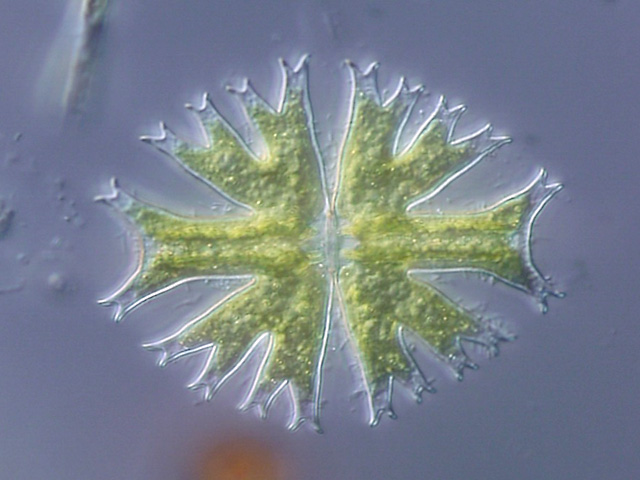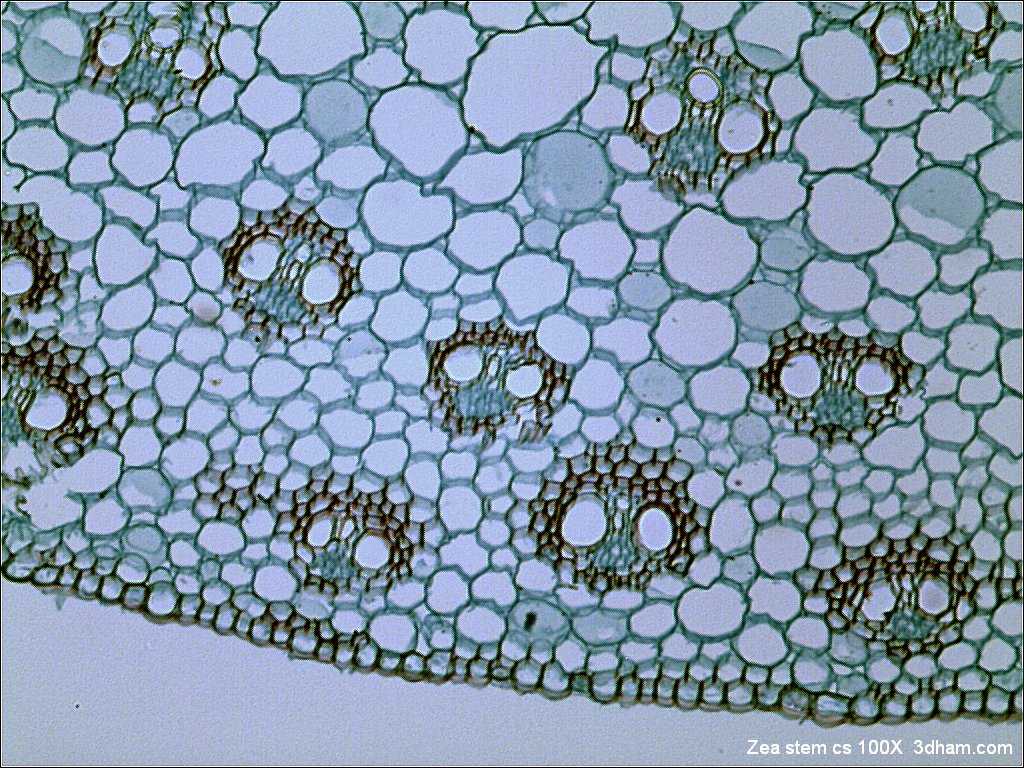|
Differential Interference Contrast
Differential interference contrast (DIC) microscopy, also known as Nomarski interference contrast (NIC) or Nomarski microscopy, is an optical microscopy technique used to enhance the contrast (vision), contrast in unstained, transparent Sample (material), samples. DIC works on the principle of interferometry to gain information about the optical path length of the sample, to see otherwise invisible features. A relatively complex optical system produces an image with the object appearing black to white on a grey background. This image is similar to that obtained by phase contrast microscopy but without the bright diffraction halo. The technique was developed by Polish physicist Georges Nomarski in 1952. DIC works by separating a Polarization (waves), polarized light source into two Orthogonality, orthogonally polarized mutually coherent parts which are spatially displaced (sheared) at the sample plane, and recombined before observation. The interference of the two parts at recombina ... [...More Info...] [...Related Items...] OR: [Wikipedia] [Google] [Baidu] |
Micrasterias Radiata
''Micrasterias furcata'' is a species of unicellular desmid which inhabits freshwater Fresh water or freshwater is any naturally occurring liquid or frozen water containing low concentrations of dissolved salts and other total dissolved solids. Although the term specifically excludes seawater and brackish water, it does include ... areas. ''M. furcata'' is round, flattened and lobed in body plan. Description ''M. furcata'' generally has a sphere-like body shape, with five lobes on each side, all 10 of the lobes divide into two other much smaller lobes which makes one side of ''M. furcata'' have 15 lobes (while also including those which divide into smaller lobes). References Desmidiaceae {{Algae-stub ... [...More Info...] [...Related Items...] OR: [Wikipedia] [Google] [Baidu] |
Coherence (physics)
In physics, two wave sources are coherent if their frequency and waveform are identical. Coherence is an ideal property of waves that enables stationary (i.e., temporally or spatially constant) interference. It contains several distinct concepts, which are limiting cases that never quite occur in reality but allow an understanding of the physics of waves, and has become a very important concept in quantum physics. More generally, coherence describes all properties of the correlation between physical quantities of a single wave, or between several waves or wave packets. Interference is the addition, in the mathematical sense, of wave functions. A single wave can interfere with itself, but this is still an addition of two waves (see Young's slits experiment). Constructive or destructive interference are limit cases, and two waves always interfere, even if the result of the addition is complicated or not remarkable. When interfering, two waves can add together to create a wave of g ... [...More Info...] [...Related Items...] OR: [Wikipedia] [Google] [Baidu] |
1-1-1 Pits From Aluminum Alloying
111 (usually pronounced ''one-one-one'') is the emergency telephone number in New Zealand. It was first implemented in Masterton and Carterton on 29 September 1958, and was progressively rolled out nationwide with the last exchanges converting in 1988. About 870,000 111 calls are made every year, and the police introduced a new number (105) in 2019, to take non-urgent police calls away from the "111" service (see 105 (telephone number)). History Introduction Before the introduction of 111, access to emergency services was complicated. For the quarter of New Zealand’s then 414,000 telephone subscribers that were still on manual exchanges, one would simply pick up the telephone and ask the answering operator for the police, ambulance, or fire service by name. However, the problem on manual exchanges was that calls were answered first-come-first-served, which meant on busy exchanges, emergency calls could be delayed. For automatic exchanges, one would need to know the local ... [...More Info...] [...Related Items...] OR: [Wikipedia] [Google] [Baidu] |
Al Photoresist Pattern Developed Via Nomarski DIC
AL, Al, Ål or al may stand for: Arts and entertainment Fictional characters * Al (''Aladdin'') or Aladdin, the main character in Disney's ''Aladdin'' media * Al (''EastEnders''), a minor character in the British soap opera * Al (''Fullmetal Alchemist'') or Alphonse Elric, a character in the manga/anime * Al Borland, a character in the ''Home Improvement'' universe * Al Bundy, a character in the television series ''Married... with Children'' * Al Calavicci, a character in the television series ''Quantum Leap'' * Al McWhiggin, a supporting villain of ''Toy Story 2'' * Al, or Aldebaran, a character in ''Re:Zero − Starting Life in Another World'' media Music * '' A L'', an EP by French singer Amanda Lear * ''American Life'', an album by Madonna Calendar * Anno Lucis, a dating system used in Freemasonry Mythology and religion * Al (folklore), a spirit in Persian and Armenian mythology * Al Basty, a tormenting female night demon in Turkish folklore * ''Liber AL'', the c ... [...More Info...] [...Related Items...] OR: [Wikipedia] [Google] [Baidu] |
Image Gradient
An image gradient is a directional change in the intensity or color in an image. The gradient of the image is one of the fundamental building blocks in image processing. For example, the Canny edge detector uses image gradient for edge detection. In graphics software for digital image editing, the term gradient or color gradient is also used for a gradual blend of color which can be considered as an even gradation from low to high values, as used from white to black in the images to the right. Another name for this is ''color progression''. Mathematically, the gradient of a two-variable function (here the image intensity function) at each image point is a 2D vector with the components given by the derivatives in the horizontal and vertical directions. At each image point, the gradient vector points in the direction of largest possible intensity increase, and the length of the gradient vector corresponds to the rate of change in that direction. Since the intensity function of a d ... [...More Info...] [...Related Items...] OR: [Wikipedia] [Google] [Baidu] |
Interference (wave Propagation)
In physics, interference is a phenomenon in which two waves combine by adding their displacement together at every single point in space and time, to form a resultant wave of greater, lower, or the same amplitude. Constructive and destructive interference result from the interaction of waves that are correlated or coherent with each other, either because they come from the same source or because they have the same or nearly the same frequency. Interference effects can be observed with all types of waves, for example, light, radio, acoustic, surface water waves, gravity waves, or matter waves. Etymology The word ''interference'' is derived from the Latin words ''inter'' which means "between" and ''fere'' which means "hit or strike", and was coined by Thomas Young in 1801. Mechanisms The principle of superposition of waves states that when two or more propagating waves of the same type are incident on the same point, the resultant amplitude at that point is equal to th ... [...More Info...] [...Related Items...] OR: [Wikipedia] [Google] [Baidu] |
Objective Lens
In optical engineering, the objective is the optical element that gathers light from the object being observed and Focus (optics), focuses the ray (optics), light rays to produce a real image. Objectives can be a single Lens (optics), lens or mirror, or combinations of several optical elements. They are used in microscopes, binoculars, telescopes, cameras, slide projectors, CD players and many other optical instruments. Objectives are also called object lenses, object glasses, or objective glasses. Microscope objectives The objective lens of a microscope is the one at the bottom near the sample. At its simplest, it is a very high-powered magnifying glass, with very short focal length. This is brought very close to the specimen being examined so that the light from the specimen comes to a focus inside the microscope tube. The objective itself is usually a cylinder containing one or more lenses that are typically made of glass; its function is to collect light from the sample. Magn ... [...More Info...] [...Related Items...] OR: [Wikipedia] [Google] [Baidu] |
Bright Field Microscopy
Bright-field microscopy (BF) is the simplest of all the optical microscopy illumination techniques. Sample illumination is transmitted (i.e., illuminated from below and observed from above) white light, and contrast in the sample is caused by attenuation of the transmitted light in dense areas of the sample. Bright-field microscopy is the simplest of a range of techniques used for illumination of samples in light microscopes, and its simplicity makes it a popular technique. The typical appearance of a bright-field microscopy image is a dark sample on a bright background, hence the name. Light path The light path of a bright-field microscope is extremely simple, no additional components are required beyond the normal light-microscope setup. The light path therefore consists of: * a transillumination light source, commonly a halogen lamp in the microscope stand; * a condenser lens, which focuses light from the light source onto the sample; * an objective lens, which collects light ... [...More Info...] [...Related Items...] OR: [Wikipedia] [Google] [Baidu] |



